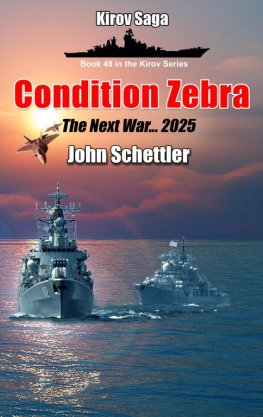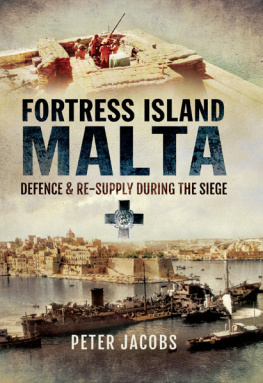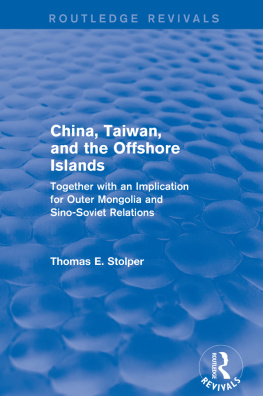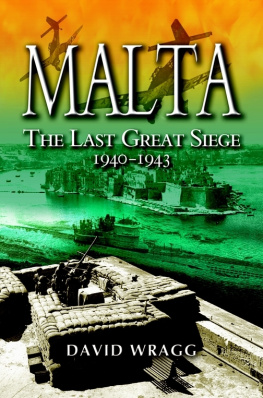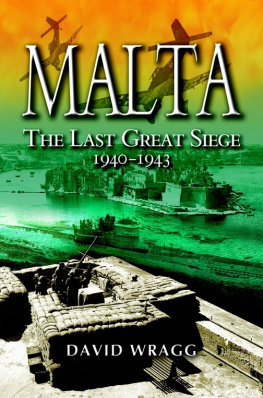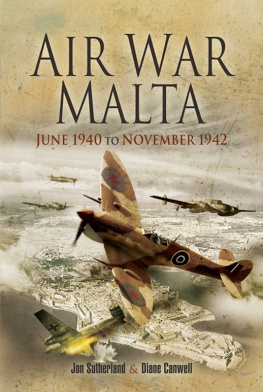John Schettler
Kirov Saga:
CONDITION ZEBRA
The War in 2025
If you want peace, prepare for war.
All US Navy ships will be at one of three states of readiness, designated condition X-Ray, Condition Yoke, or Condition Zebra.
Condition X-Ray leaves most watertight doors and compartments open, providing the greatest ease of access throughout the ship. It is used only when the ship is exposed to minimal threat, or when docked in port where there is no threat of attack. The only doors closed and secured under this condition are those marked with a black letter X.
Condition Yoke is an intermediate state of readiness and watertight integrity, most often set when the ship is underway at sea or docked in port during wartime. Under this condition, all doors, hatches, and fittings marked X or Y will be closed and secured.
Condition Zebra is the highest state of readiness, providing the maximum watertight integrity and survivability. Under this condition, all doors, hatches, and fittings marked X, Y or Z will be closed and secured. It is set anytime the General Quarters alarm is sounded, whenever a ship leaves a port during wartime, to seal off and localize fire or flooding on the ship when the crew is not at General Quarters, or anytime the Commanding Officer determines this maximum condition of survivability should be set.
On the 10th of November 2025, the USS Roosevelt Carrier Strike Group departed Darwin Harbor, heading west towards the Indian ocean outpost of Diego Garcia. It was Condition Zebra
Dear Readers,
November 2019 finally saw the LRASM certified for Early Operational Capability (EOC) with the United States Navy. The carrying platform is the F/A-18 Superhornet, and the missile was also certified for the B-1 bomber last year. So the day of the old Harpoon is finally coming to an end, and the Navy is getting a valuable standoff strike weapon with range at long last. Oh, they always had the Tomahawk, for land attack, and a program converting some of those to the Multi-Mission variant so they could also strike ships. (Sometimes called the Maritime Strike Tomahawk, or MST). The Navy has also officially selected the Konsberg-Raytheon Naval Strike Missile for their struggling Littoral Combat Ships, as I have been modeling them here in this series.
We still wont see them in the VLS bays of the destroyers, but that is coming. It is all part of the slow awakening of the US Navy to the fact that its mission is no longer to support the hunt for small cadres of would be terrorists in the mountain and desert wilderness areas of the Middle East, or to simply show the flag with freedom of navigation patrols in the South China Sea. The new mission is reorienting the Navy for Great Power Competition, and at the top of that list of competitors is China.
At this time, and thankfully, China presents no sign of ever acting in the way they do here in this series. The modern segments of the story present hypotheticals, showing what China would be capable of doing by 2021 in Season Six, and in the 2025 to 2030 timeframe here in Season 7. The cost of a war like this, in economic and social disruption throughout the world, would be profound, and that is one reason why the proverbial cooler heads may prevail, and we may never see such a war. This story, however, is an attempt to model what might happen if such a conflict ever came. At the same time, it takes a hard look at what the various militaries are and are not really capable of, a kind of warfighters testbed that reveals the strengths and weaknesses on all sides.
Last season we saw the US go to war with no more than 123 LRASMs by the year 2021. They had 700 SLAM-ERs, 625 Standard Missile-6, and just 296 Multi-Mission Tomahawks, though that conversion program continues on Block IV models. In this war in 2025, I add four more years of procurement and production, and with an awareness that Great Power Competition is the name of the game in those future years. The fact that the 2025 conflict is also arising from the alternate history crafted in the main series (Books 1-40), allows me to show you a US Navy that has corrected many of the glaring deficiencies it labors with today.
The USN in 2025 has standardized on the MMT or Maritime Strike Tomahawk, though it still is using up its older inventory of TLAMS and TACTOMs for land strike missions. It has the LRASM, for both naval aircraft and on many of its destroyers. It has given the Zumwalt class destroyers ammunition for its advanced deck guns. It has Standard Missile-6 in good numbers, and SM-3 deployed on most every cruiser, and on some destroyers. It put the Naval Strike Missile, and a VLS section with the ESSM on its Freedom Class Littoral Combat Ships. It has the F-35 on all of its carriers. Beyond that, it has some interesting fringe aircraft like the rebuilt Super Tomcats, a new carrier based strike plane, the Avenger II. In short, Im showing you a US Navy that will be as good as it could possibly get by 2025. Even though there are fewer big deck carriers, those that are active here are all one might expect to see operational from our current group.
As for the Royal Navy, I have boosted their strength a great deal, with twice as many Daring Class destroyers, and the addition of some Type-31 Frigates, and more of the Type 26. Yet the combats I modeled suddenly showed a glaring weakness with their new Sea Ceptor missile systemit cant track, catch, or kill very high supersonic or hypersonic missile threats. As for their carriers, I floated both Queen Elizabeth and Prince of Wales, but also showed how Britain built an intermediate carrier class between the Invincible class and those newest flattops. That said, note well the effectiveness, or deficiencies, of the British carriers when it comes to actual combat. They just dont have any effective standoff strike munitions fir their F-35s.
As for China, you will see a much stronger navy, assuming the Chinese go all out with their breakneck naval production. (They built 24 new ships in 2019). As I was writing this, China commissioned its second aircraft carrier, Shandong, on December 17a copy of the Russian built Liaoning. Here they get six carriers, though one has already been sunk. They also get a big production run on the new Type 055 destroyers, using them as the heart of all their many surface action groups, and this at a time when the US is retiring its own cruisers. Antietam, Bunker Hill, Leyte Gulf, Lake Champlain, Mobile Bay and San Jacinto are all scheduled to be decommissioned.
Yet in spite of that, the Chinese carriers cant really get out into the Deep Blue, and also have limitations in strike capability. Yet the adoption of the J-31 as the primary carrier based fighter here gives them good defensive ability, as you will see. Their main naval strength, however, is in the formation of massive fleets built around strong Surface Action Groups, with submarine screens.
Well take a look at how even a revitalized Royal Navy fares against this new Chinese fleet, and then the big kid on the block shows up, the USN. Just where can China fight, and for how long? Can it protect and secure its maritime lines of communication, or are the String of Pearls strung along the maritime silk road a will-o-the wisp fantasy? In the end, naval power boils down to one thingsea control, and we will see who can deliver that, looking closely at China, the UK and the USN.
I thought I would spend a lot of time in Tangent Fire describing the nuclear exchange in 2021, but found it would be too ghastly to sit there putting all that into descriptive prose. The stories and fates of the major characters were therefore uppermost in my mind, and so they led us on to 2025, the future they helped to forge, and perhaps the only future where any of them might survive.

